Angeghakot, a village of about 2,000-3,000 people (figures vary) is in southern Armenia, about 10 km. from Sisian, the regional capital of Syunik province. Travelers from Yerevan on the way to Karabagh pass by Angeghakot, then Sisian and Goris, before entering the Lachin Corridor. The drive from Yerevan to Angeghakot takes roughly 4 hours. With an altitude of about 6,000 feet, summer days are hot but evenings can be quite cool. Thus, unlike some other regions of Armenia, little fruit is grown here. Agriculture consists primarily of raising livestock and planting grains.
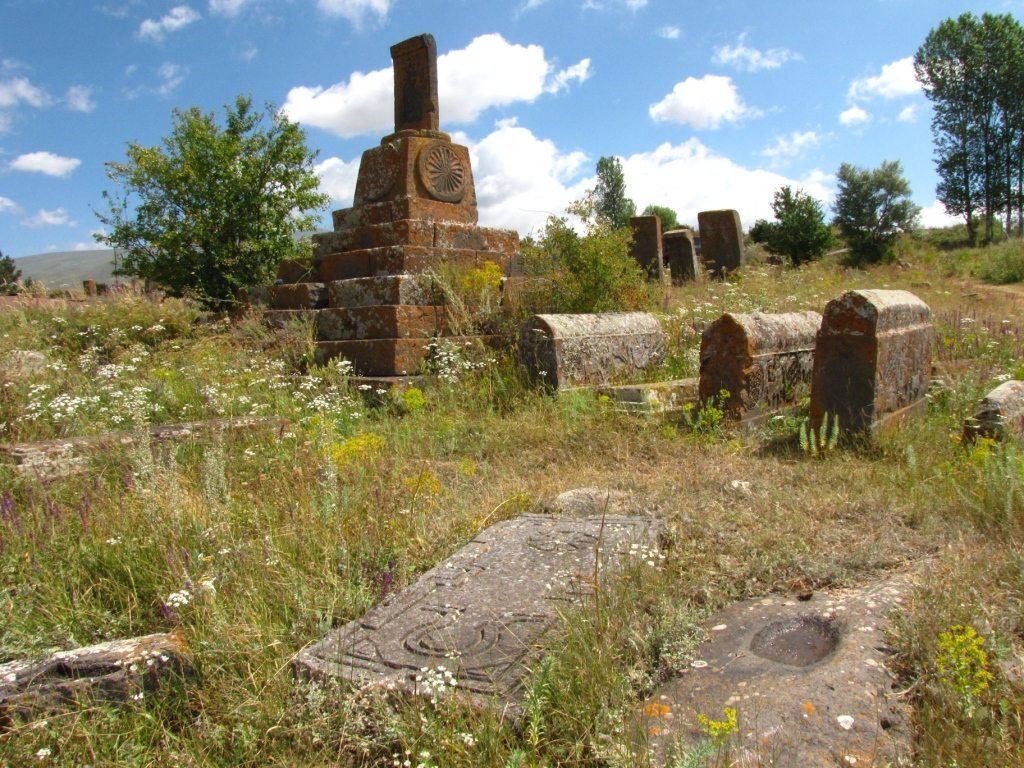
Upon entering Angeghakot, we asked a few people for directions to some historical sites. In each instance we were advised to find Mayolis Karapetyan, the repository of Angeghakot’s history and culture.
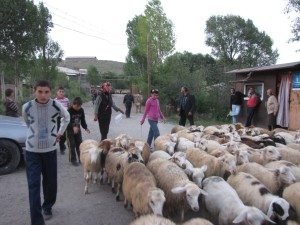
We found him, and learned that Angeghakot’s history dates to the Stone and Bronze Ages. In or near the village are monuments attributed to the Vartanants War against Persia for the defense of Armenian Christianity against paganism. Mayolis took us to the small Sourp Vartan Church, half built into the side of a hill in back of some stone-cutting machinery. It is said the site was visited by Saint Vartan’s surviving soldiers returning from the Battle of Avarayr (451 AD), though the sign on the church indicates it was built in the 13th century.
Some believe that Saint Vartan may be buried there, although there are a number of such sites purporting to contain his remains. Mayolis believes he has
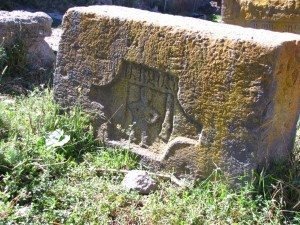
evidence that Vartan Mamikonian is buried in the valley below, under what appears to be a large man-made hill. In a cemetery in Angeghakot is a tomb said to have been constructed by Vartan Mamikonian’s daughter, Shushanik, for her father. Instead, Shushanik is the one who is buried there. Also in the cemetery are pre-Christian monuments converted into Christian tombstones after the adoption of Christianity as a state religion. Indeed, the medieval historian Stepanos Orbelian (1250–1305) indicates that Christianity was first brought to Armenia in Syunik by Saint Bartholomew.
In 1699, Israel Ori (1658-1711), born in nearby Sisian, but who spent a couple of decades in Europe learning European military science, returned to Armenia to help liberate the country from the Persians and Ottoman Turks. He visited Angeghakot to meet Melik Safraz. (Meliks were local princes who ruled their regions but often vied with each other for control.) Ori succeeded in getting the meliks to put aside their differences and present a united petition to Russian Czar Peter the Great and the Pope to

intervene militarily in Armenia to save Armenia’s Christians. Unfortunately, Ori died prematurely in 1711 without implementing his plan. Ori’s efforts inspired a Persian-Armenian revolutionary, Joseph Emin (1726-1809), to enlist foreign help to liberate Armenia, but this too failed. According to Mayolis, Ori’s meeting with the meliks took place at Melik Safraz’s home in the outskirts of Angeghakot. The house no longer stands, he said, but perhaps during our next visit we will visit the site of Melik Safraz’s house anyway.
This region was a battleground for other revolutionaries who fought to preserve the region’s independence. In the 1720’s, David Beg defended this region. His commander, Mkhitar Sbarabed, who was assassinated, is buried in the valley of Khnsoresk less than an hour from Angeghakot.
There are three other medieval churches in the village: Sourp Astvatsatsin, Sourp Stepanos, and Sourp Hazaraprkich. Next to Sourp Astvatsatsin are buried officers who served under General Antranig while defending this region in the late 1800’s and early 1900’s. Elsewhere in the village is a small cemetery with the graves of Armenian fedayees (freedom fighters) from the same era. I’m told these soldiers likely fought under General Keri (or one of the other military leaders who helped the villagers defend this territory). One tombstone portrays a soldier standing next to his rifle.
Near a World War II memorial are the graves of Angeghakot’s martyrs who died fighting for Artsakh’s liberation. Every village in Armenia has such a cemetery.
While Angeghakot does not have huge cathedrals and fortresses (though there are some in the mountains nearby), it boasts an extremely rich and ancient history—if the visitor knows to ask. While there are no
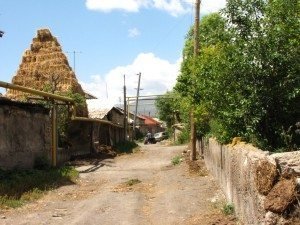
tourist amenities, hotels, or restaurants in the village, these are available 20 minutes away in Sisian. But Angeghakot does offer a window into Armenian history, current village life, and Armenia’s constant struggle for independence.
While enjoying refreshments at the end of our visit, Mayolis’s young granddaughter recited for us, from memory, some of his poetry, while two older grandsons split wood in preparation for the coming winter. With no means to get his poetry published, my wife Lisa and I offered to publish a limited number of copies upon our return to the U.S. Our friend, Berge Jololian, who makes three to four trips annually to donate computers to schools in the region (see www.facebook.com/techedarmenia), acted as an intermediary, bringing manuscripts back and forth. We have printed a limited number of Mayolis Karapetyan’s poetry booklets at no expense to the author. The booklets, in Armenian and including a photograph of the author with his granddaughter, contain 35 poems. It is likely that we’ll publish more copies in Armenia.
The booklets are available for $10 plus $2 shipping and handling. All proceeds will go to the author. For more information, call Joseph Dagdigian at (978) 772-9417. The books are also available from the National Association of Armenian Studies and Research (NAASR) by calling (617) 489-1610.
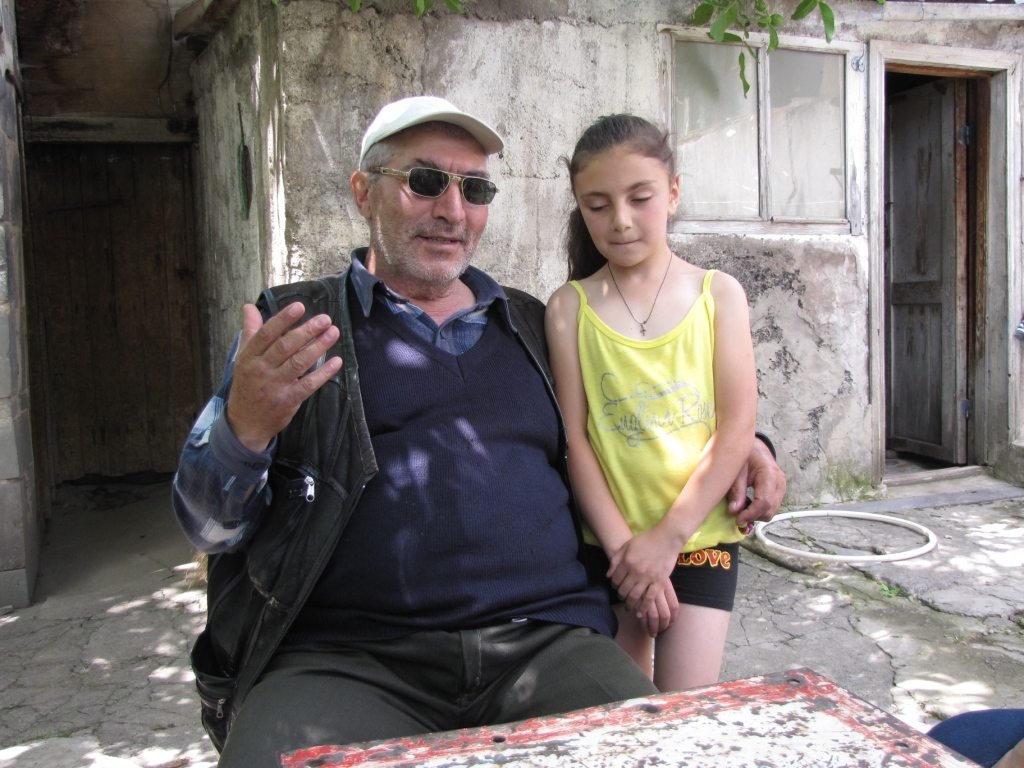


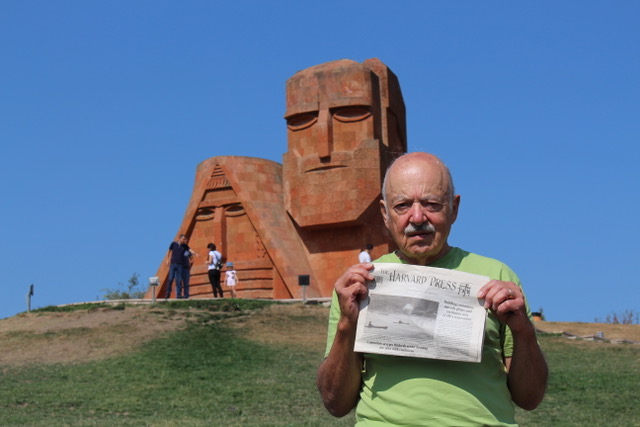
Be the first to comment